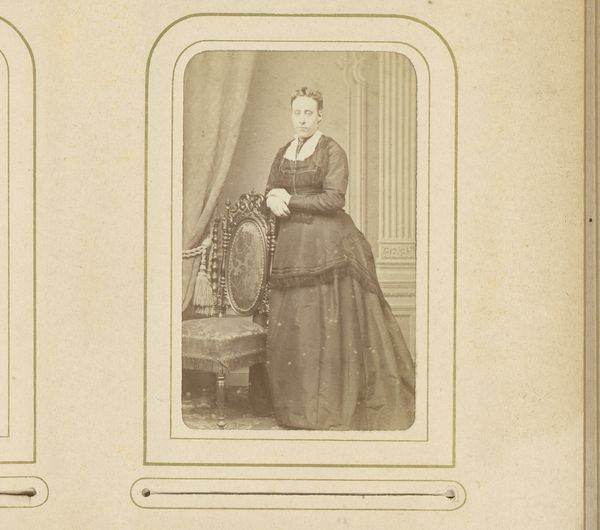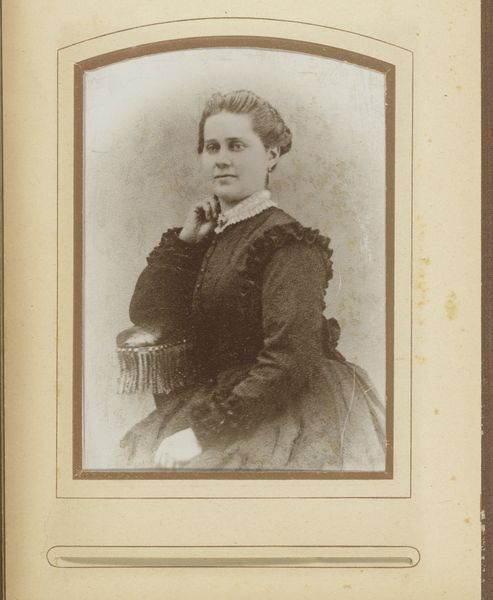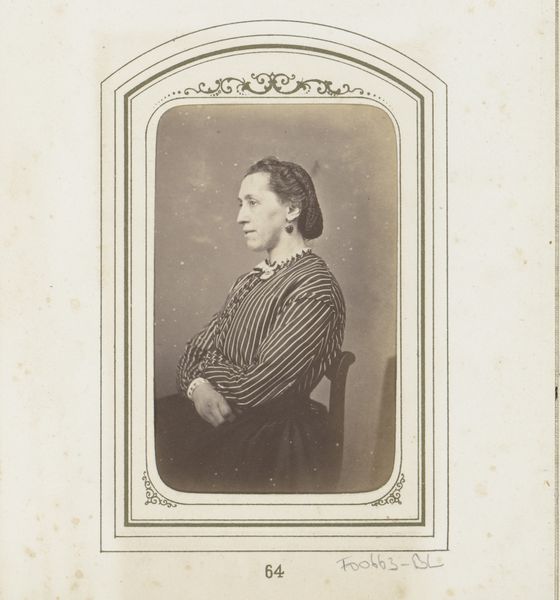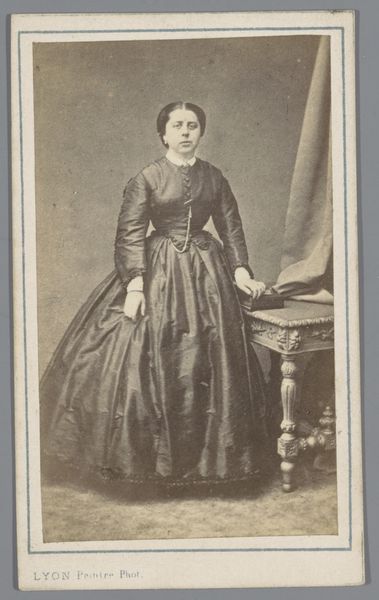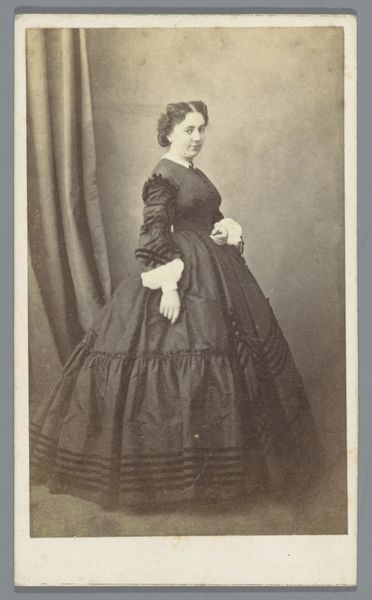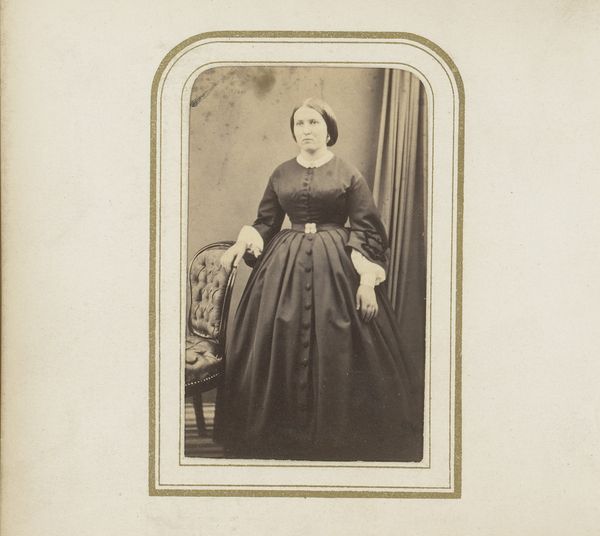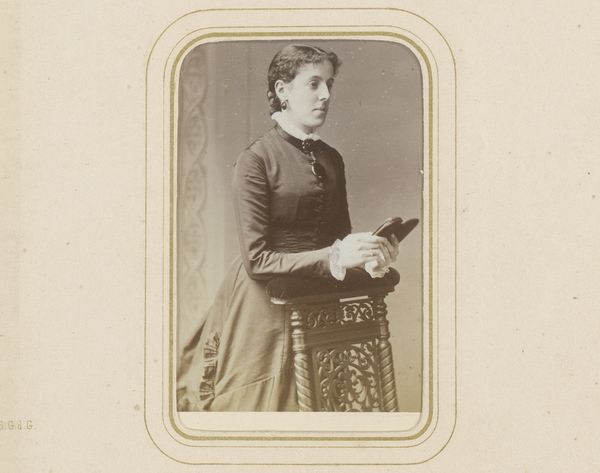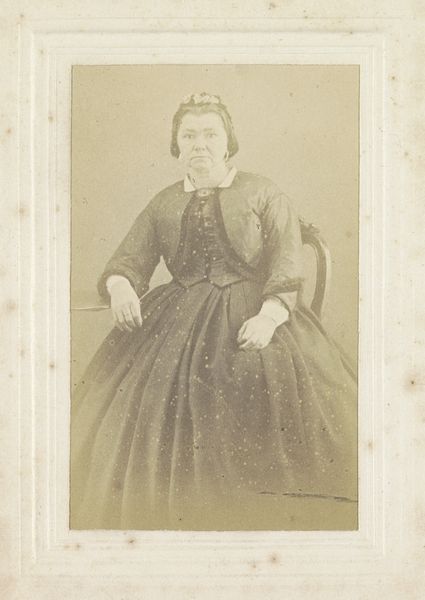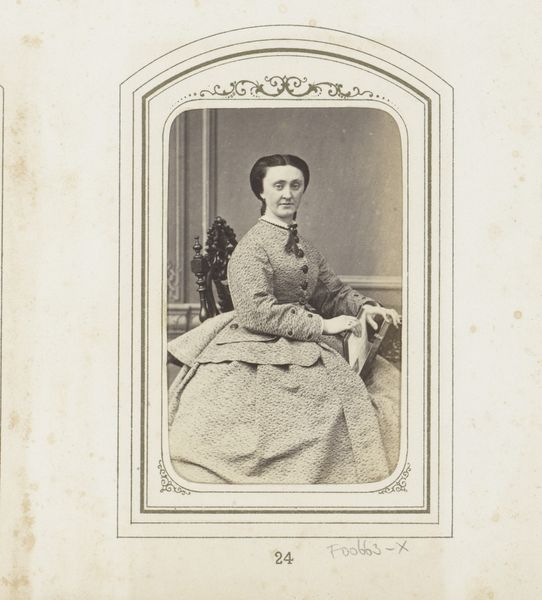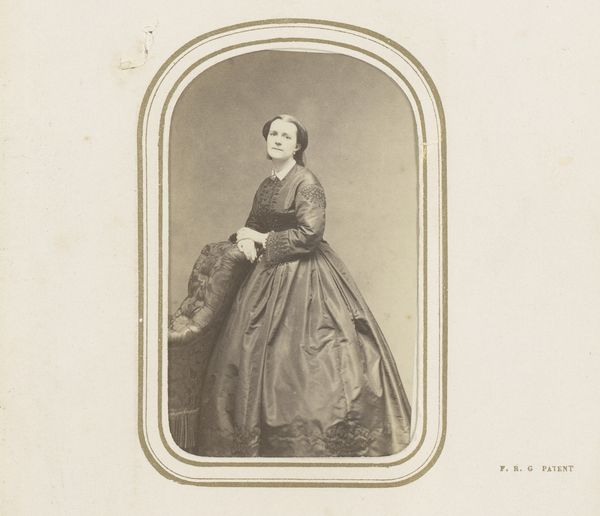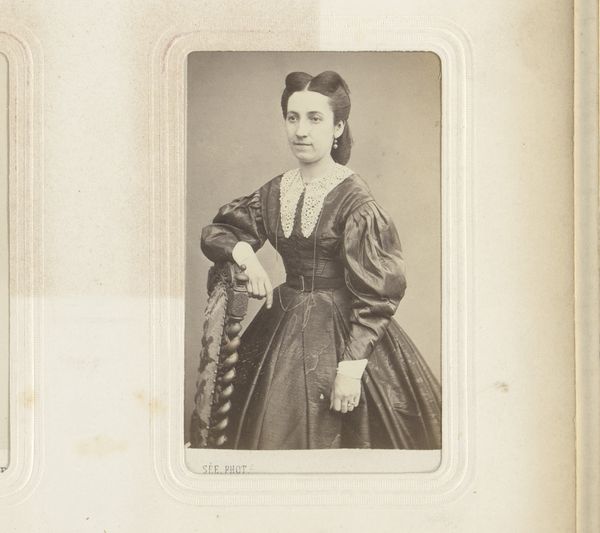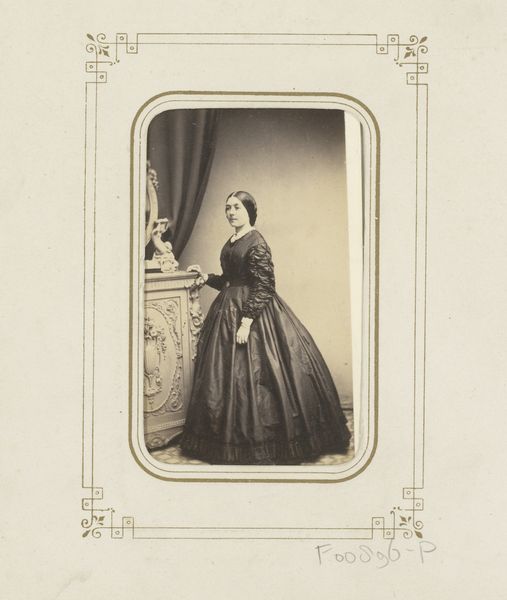
photography, gelatin-silver-print
#
portrait
#
16_19th-century
#
photography
#
historical photography
#
gelatin-silver-print
#
19th century
#
genre-painting
Dimensions: height 85 mm, width 53 mm
Copyright: Rijks Museum: Open Domain
This card portrait, made by Eduard Fuchs, shows a seated woman. The image is captured using the wet collodion process, a photographic technique popular in the mid-19th century. This process involved coating a glass plate with chemicals, exposing it in a camera, and developing it immediately. The result is a highly detailed, but fragile, negative, from which prints like this one could be made. The tones and depth of field are characteristic of the era, the sepia tone adding to its vintage feel. Photography in this period was still a relatively novel technology, and the production of portraits like these democratized image-making to some extent, making it more accessible to the middle class. Each portrait required careful posing and lighting, representing a considered effort by both the sitter and the photographer. Think of it as a material trace of a specific moment in social history, one carefully captured and preserved through a labor-intensive chemical process. By considering this, we begin to understand how photography, from its inception, blurred the lines between art, craft, and industry.
Comments
No comments
Be the first to comment and join the conversation on the ultimate creative platform.
